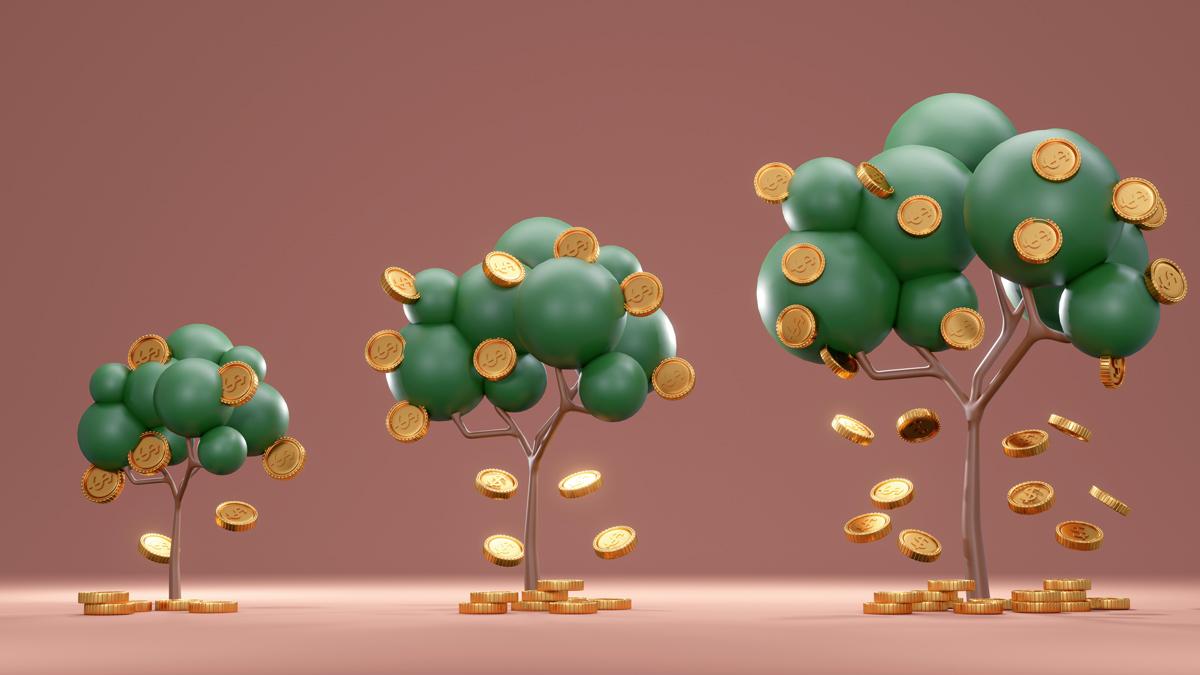
The Ultimate Location Rulebook For Buying Property
The words ‘location, location, location’ have long echoed throughout the Australian property market but what does it actually mean?
Sure, buying beach or waterside, or within 10kms of the CBD will not see you wrong – however, with the price of property continuing to soar, not everyone can afford to buy in such premium and primary locations anymore.
If this is you, then learning about how to buy in secondary markets is absolutely key.
Within any market – primary or secondary, there are indicators of the market’s ability to perform. When we understand what these market drivers are, we can organise our investment properties into locations that are primed for growth. You’ll also soon find that the ‘location, location, location’ phrase that real estate professionals love to talk about, is actually derived from more than just a post-code.
These buying factors are split up into two groups – macro drivers and mirco drivers.
Macro drivers tend to be more common and exist in a city to a state area and micro drivers tend to be seen more likely in suburbs or towns.
THE MACRO DRIVERS ARE:
Population growth, economics, demographics, infrastructure, yield variation and supply and demand.
Let’s break it down with some factual examples.
Population
By 2051 Australia’s population is set to increase to 40 million people according to the ABS. Today we are at 25 million people. With the world adding 60,000 new people every day and many wanting to migrate to Australia or New Zealand, it’s easy to see how real estate becomes valuable.
Economics
Economics is really linked to the employment market. Invest where there are jobs. The economy will always gather pace and then get jolted. Things will happen globally and locally. The major lesson to consider is to keep it simple. Invest near jobs such as big cities which have lots of industry.
Demographics
Demographics are fascinating because the trends are constantly evolving with time. For example, changes in household structures mean Australians have an increased desire to reside alone. The higher divorce rate puts pressure on the property market because mum and dad both need separate homes. And then there’s COVID which now sees more people working from home.
Infrastructure
Developers and governments spend billions of dollars on infrastructure each year. You will find the growth if you can locate the infrastructure. Be sure the infrastructure is real and forthcoming though, and not fictitious stories or fanciful hope. Check official government reports, in particular, state and local planning departments.
Yield Variation
This is a huge factor in the success of many areas. If yields are high, growth usually follows. Yield variation is an instrument to gauge future growth of markets because as the yields expand, growth will follow and compress closer to already expanded yields. The further the yield advances, the more likely that a growth expansion phase will follow. Simply remember this: “growth follows yields.”
Supply and Demand
Every suburb has different supply figures and future forecasts relating to supply. Try and not look at citywide figures. Dig deeper suburb by suburb to crack the code.
THE MICRO DRIVERS ARE:
The owners established benchmark, the new established benchmark, socio-economic, symbolic landmarks and the ripple effect. Let’s dig into it.
The Owners Established Benchmark
This is a great way of ensuring you are buying well in a suburb or town. Focus on the suburb and find benchmark sales and buy next to the newly created benchmark. In real estate, there is a phrase known as “Worst House, Best Street”. The owners established benchmark applies to this phrase. In other words, find a property that is literally a blank canvas in need of work i.e. the “worst house” and close to properties that have recently been purchased at higher amounts in value.
The New Established Benchmark
The real estate market often exposes investors to a mixture of new property and old property. Investors are often perplexed as to what to buy, new or old, and what variations exist accordingly. For example, if an old property in a micro market (suburb or town) is worth $200,000 and a comparable new property is worth $300,000, then the old property would be the better buy as the new established benchmark (NEB) variation is high at $100,000.
One could add value to the old property through renovation and extract a profit because of the high NEB variation. If the old property was $280,000 and the new similar property in the micro market is worth $300,000, then the NEB variation is low at $20,000.
The new property is the better buy, as the investor would not be able to add value through renovation to the old property to compete with the new property.
Symbolic Landmarks
When targeting a micro market for long-term growth, it’s often useful to consider symbolic reference. Symbolic landmarks are a unique suburb attribute that can add to the long term performance of the area and therefore the property.
Take a major hospital for example. Major hospitals are a huge strategic symbolic reference. They provide employment to thousands of people and are geographically planned to sustain growth. It’s not often that hospitals are closed down. Some hospitals are planned by state town planners to be around for hundreds of years. Buying close to symbolic references often means you get a steady stream of tenants and high yields. There are many unique symbolic landmarks that enormously affect the long term performance of a suburb or town as a micro market driver, such as beaches, universities, employment centres and transport hubs.
The Ripple Effect
The real estate ripple effect acts similar to a drop of water splashing into a still pond. The associated ripple then flows and creates movement in the marketplace.
Seeing the potential of an area and judging or timing a growth surge via the ripple effect requires sound research into a suburb and its similar surrounding areas. For example, if the average home price of Suburb A is $600,000, Suburb B homes 2kms away are averaging $400,000.
There is an instant variation evident in this example. The ripple variation is $100,000 per 1 km. By researching carefully what attributes Suburb A has compared to Suburb B, one will often find that the suburbs are comparable; one is simply closer to the city or has a more significant symbolic reference than the other.
Buyers soon respond to affordability (value) over proximity! Often a suburb can be targeted for gentrification after similar close-by suburbs have been revitalised. This means the ripple may be coming. Property investors can reap the benefits of this catalyst for property growth.
Socio-Economic
Socio-Economics is a key micro market driver and is a great way of understanding if a micro market (suburb or town) will grow. The easiest way to explain socio-economics is by the following equation:
Average Income versus Average House Price
If wages are high and house prices affordable, the property market can rise in value.
THE TIME TO INVEST IS NOW
All of these factors and more should be incorporated into your buying strategy.
Learn more by taking the first step and sign up for a free property investing night with TRC-Gorod. You’ll walk away with the confidence to make smart, informed decisions about your portfolio.
Recent Articles
The Equity Tactic For Excelling Your Property Portfolio
While long term we know that cash flow is dependent on a good rental income, capital growth is the quickest way our property can pay us back. This comes down to having some smart tactics to get the most out of every dollar of value in our investment properties – something we like to call equity lock.
Are You at Risk of Losing Millions?
Considering that all major Australian cities are coastal, and most of the richest neighbourhoods are beachside, the growing threat of severe weather incidents due to global warming throws a serious spanner in the works when considering where to buy and invest. If you’re a climate change sceptic, we’re not here to judge. But that position isn’t going to help you if the institutions you rely on to protect your assets won’t have a bar of your $3 million beachfront house.
The Best Home Loan for Property Investors
Deciding on the right loan structure as a property investor, is a little bit like choosing the right outfit on a first date. It depends on what stage of life you’re at! If you’re new to the game, something a little daring might work best. Later on, you might want to play it safe. It’s the same for property investment and the stage you’re at reflecting how risky or safe your loan structure needs to be. Here we weigh up the pros and cons of principle and interest loans vs interest only loans for property investors.
The Three Golden Rules of Selling an Investment Property
Rules are an important part of life. And rules in most cases, are really just another word for common sense. They give us a clear framework around many important aspects of life, so it’s no surprise when it comes to selling your investment property, there’s a number of rules you need to follow in order to get the best result.
If you want to know when to sell an investment property, or even if selling an investment property is a good idea, all you have to do is read the rules.
Use Debt To Create Wealth in 3 Simple Steps
Most of us were raised with the idea that debt is bad. Debt drags you down. Rich people are never in debt.
While that may have been true for our great grandparents, it’s no longer the case. Debt is one of the keys that can unlock future wealth as a property investor. The more good debt you have, the more income you can create.
But, before you go out and put yourself $1 million in the hole, let’s talk about the right kinds of debt. The debt that’s going to lead to success, not ruin. This is called…
Harness Data To Help Guide Property Investor Profits
I’m sure you’ve heard – data is the new currency. It’s the next big thing for business and it will be a catalyst for driving the world forward over the next few years. Learning how to harness the power of data in property investing, will be a secret weapon all investors can use to create more wealth. So, what is data? It’s information, insights and predictions that property investors can use to help them make smart property purchases.
A Lending Boom Is Coming Are You Ready?
After a lot of bad news over the past 12 months – thanks a lot COVID-19 – it’s nice to be able to kick off 2021 with some good news. There’s going to be a lending boom which, if you have your property investment strategy in place, is going to make your life a whole lot easier so you can build your property portfolio faster and cheaper.
What Is the True Value of Your Investment Property?
Like a fine wine, the value of property gets better over time. Traditionally, the more time you have an investment property, the higher the value will rise.
However, unlike your favourite Shiraz, property values can go up and down, and up again.
Getting to know how, why and who is valuing your property can help us understand what property to invest in.
There are three ways to value a property – and three very different people doing the valuing.
The 3 ‘Big Rocks’ of Property Investment Success
What are your Big Rocks this year? What are your Big Rocks for your property investing journey?
If you’re scratching your head and wondering if you’ve accidentally stumbled across a blog for construction workers, bear with me.
Big Rocks is a concept often used in business or life coaching to essentially describe your priorities. The theory is, if you don’t have clear priorities, or if you have too many, chances are you’ll let smaller issues distract you and ultimately fail in your goals.












